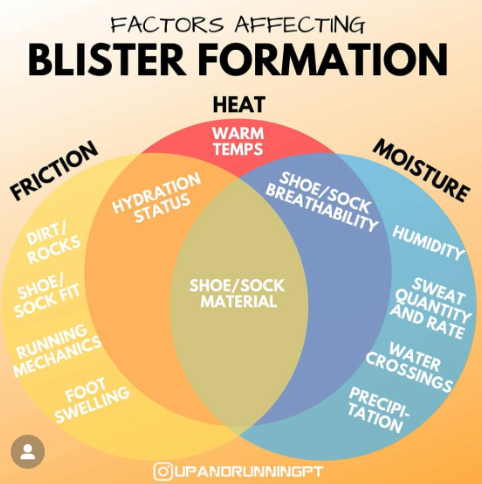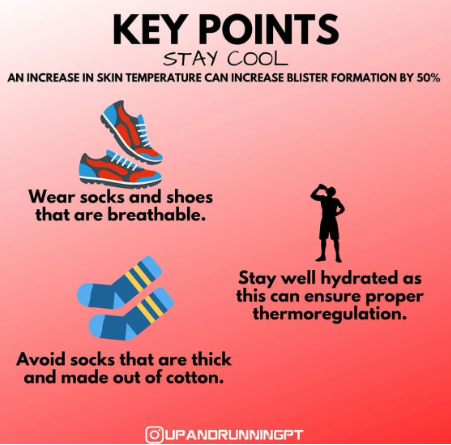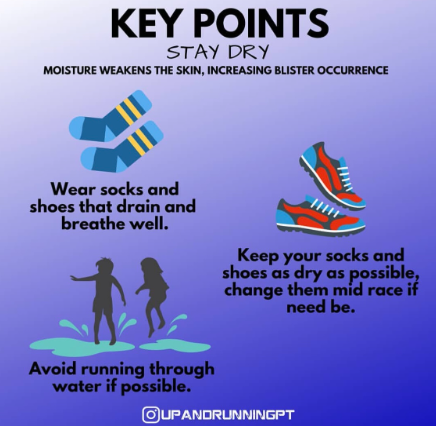Discover effective strategies to prevent blisters in running. Learn what causes blisters, how to choose the right socks and shoes, and other essential tips for a comfortable running experience. Blisters can be extremely painful and can wreck a race or long run. Some runners seem to have more issues than others, but if you’re someone plagued by blisters, this blog is for you.
Preventing Blisters for Runners

What causes blisters?
Blisters are caused mainly by friction between the two outer layers of the skin and on the outside of the skin. As we run, forces through the foot shear these layers of skin against each other, over time causing skin breakdown and/or the formation of a fluid sack between these layers.
Heat and moisture add to friction to create a perfect storm, reducing skin integrity and ultimately increasing the probability of developing blisters. A study showed that with just a 7.2°F increase in skin temperature, blister formation can increase by 50%! Additionally, moisture can further weaken the skin and add to friction between the skin and sock/shoe.

Skin Adaptation and Blisters
Something that needs to be mentioned is that the skin adapts to forces just like any other part of the body. The more you gradually expose your skin to these types of frictional forces, the more resilient to them your skin becomes. So it’s pretty common for newer runners to have more issues with blisters than experienced runners.

Identifying Possible Causes for Blisters in Running
Other obvious mentions are that if you all of a sudden start having issues with blisters, think about things that you may have changed recently. Maybe you changed the type of shoe or sock you were wearing? Started running on trails? Maybe it’s just been really hot recently, or you are running in a different climate… Either way, knowing this is key since some of these factors may be immediately reversible.
Tips for Long Runs and Race Day
- Keep it Simple: On race day, keep your blister mitigation strategies simple and practical. Don’t introduce new elements that you haven’t tested in training.
- Sock and Shoe Experimentation: Start by experimenting with your socks and shoes during your training runs. Find the combination that works best for you in terms of comfort and minimizing friction.
- Caution with Remedies: Be cautious when applying remedies like powders or lubricants. While they can be helpful for some, they may exacerbate the problem for others. Test them during training to see if they work for you.
- Callus Maintenance: It’s essential not to allow your skin to thicken too much over time. Regularly shave down calluses with a pumice stone or file to maintain healthy skin.
Maximize Comfort and Stay Blister-Free
By incorporating these advanced strategies and considerations into your blister prevention routine, you can maximize your comfort and minimize the chances of blisters interrupting your running journey. Remember that each runner’s experience is unique, so take the time to find the combination of techniques that work best for you. Whether you’re training for a race or simply enjoy long runs, these tips can help you stay blister-free and enjoy your time on the road or trail.

